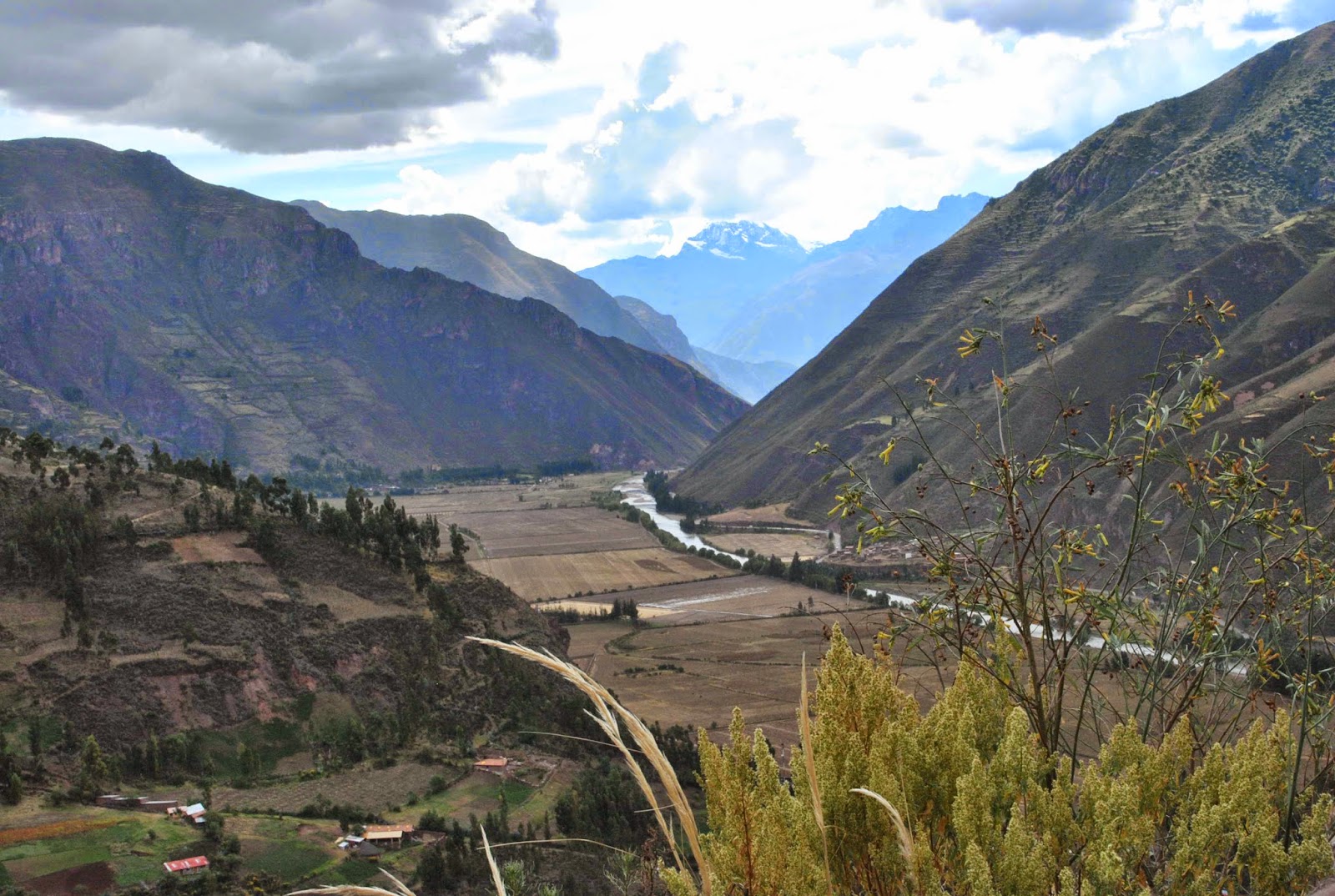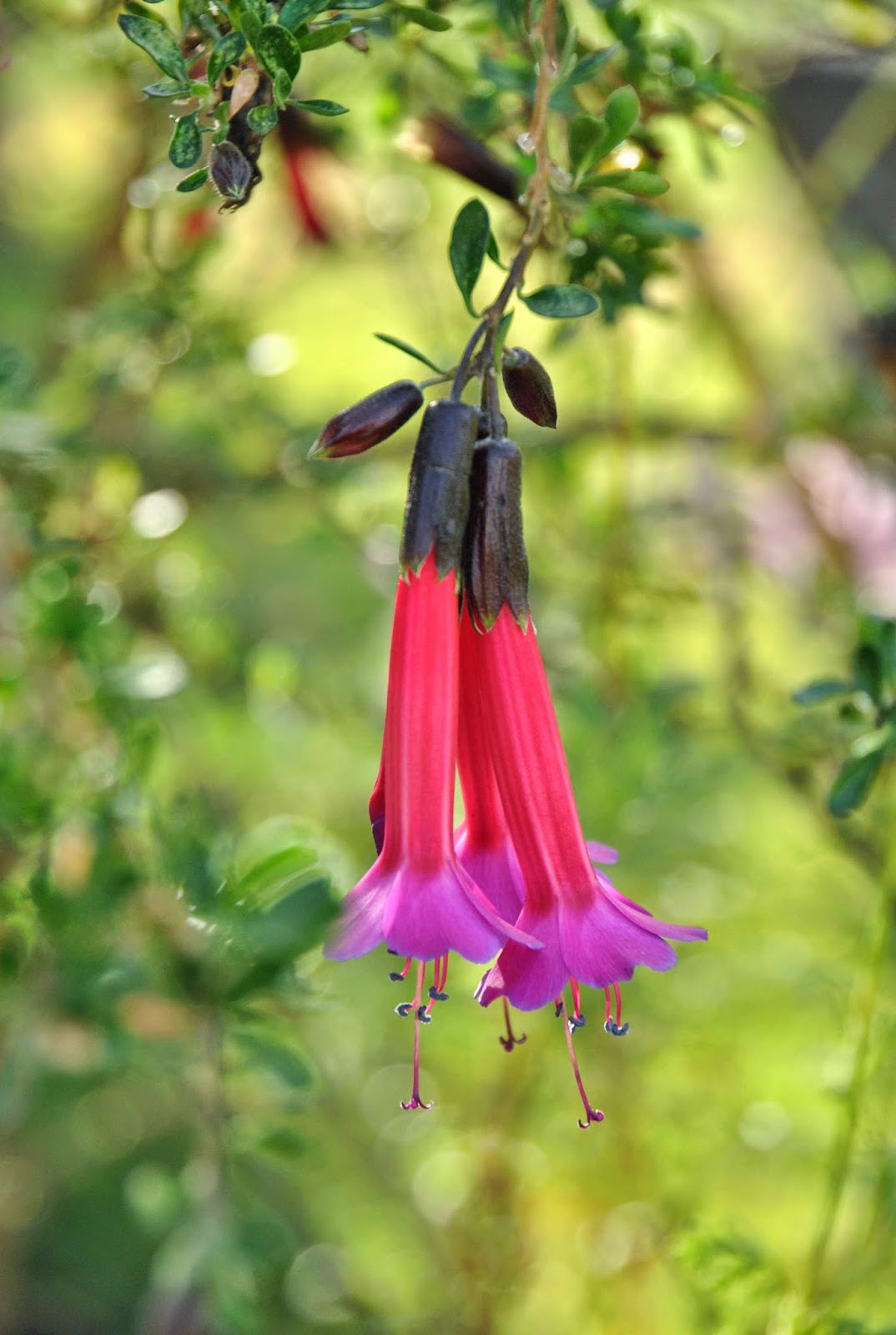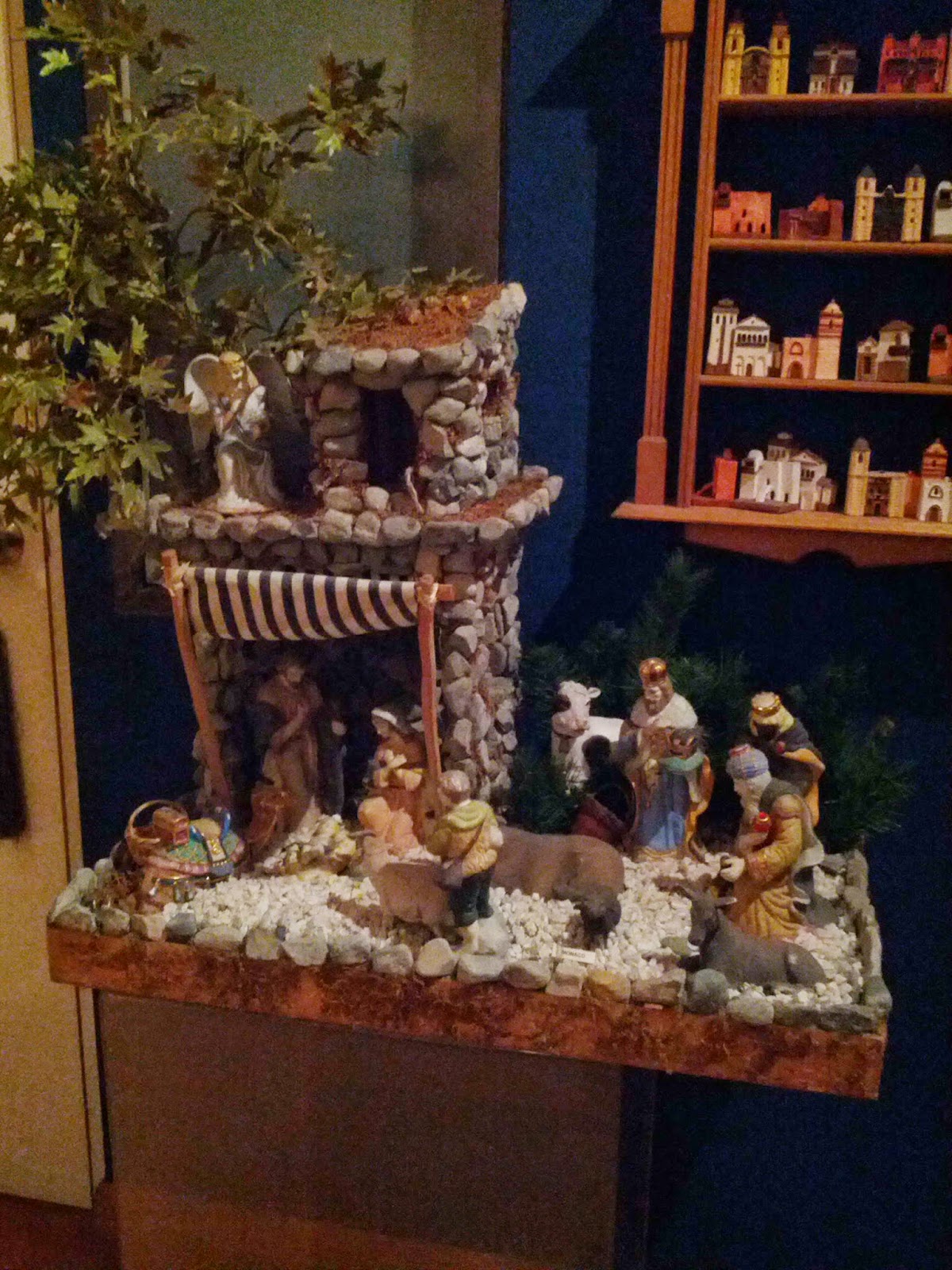Well our evening ended up a little different than we had
expected. We dropped into the lobby bar for a Pisco Sour for Monica and met one
of the other couples from our trip who had come in from the airport with us,
sat with them for a while and then all had dinner together.
On Thursday morning, bright and early, we all met for
breakfast. There are 24 of us on the tour along with our tour director, Marcos.
Oddly enough, there are actually six Canadians - us, a lady from Scarborough
and her daughter who lives in Penetanguishene, and a couple who now live on
Bowen Island, in the channel outside Vancouver. They get all the Alaska cruise
ships sailing by their home. Other than that, everyone except one couple from Britain
is from the US.
Once breakfast and the introductory meeting were over, we
headed out to the buses for our Lima city tour. Now Marcos broke us into two
groups, to make it easier for the upcoming tours where smaller groups and smaller
buses would be more advantageous. Does anybody think we look more like llamas
or alpacas?? No matter, we're in the alpaca group for the rest of the tour.
After a rather lengthy bus ride, traffic in Lima rivals the
worst we have seen anywhere we have travelled,
We arrived at the
historic city centre to begin a short walking tour of the major churches. We
had been in Lima off the Crystal Harmony in 2003, so much of this was a repeat
of that tour. One addition that was different was a trip into the catacombs at
the Benedictine Monastery of San Francisco. Up until about 50 years ago, there
were no cemeteries in Lima and for centuries the dead were buried in catacombs
under the monastery, with one generation interred on top of the next.
First, though, we visited the Church of San Pedro. Here are
a few photos of the inside of the church. It is quite beautiful and also quite
possibly, although we never asked, also decorated with gold that the Spanish
may have taken from the Inca people when they conquered them. The best way to
take control of a conquered people is to replace their religion, so the Spanish
went out of their way to destroy any and all buildings with a religious
meaning. Even groups other than the Inca used pyramid structures in their
religion; so as a result of the Spanish there are only 2 of these left in Lima
today. We did pass one of them later in the evening but couldn't get a photo.
It was already dark and there was no warning of it coming.
After also seeing churches dedicated to St. Rose of Lima and
St. Ignatius of Loyola, we next visited the Monastery of San Francisco where
the catacombs are. Of course, no photos are allowed anywhere except the
entrance, so that's what you get:
We are pleased to announce that even Monica made it through
the walk in the catacombs. Although fairly small and low-ceilinged, they were
lit well enough to keep the claustrophobia at bay. It is kind of weird though,
to see a true 'herring-bone' layout down there. The story goes that
after visiting the catacombs in Rome, a Friar figured out they could open their
catacombs, charge admission, and make some much needed money for the Order.
Since the catacombs had not been used for many years, archeologists were
commissioned to essentially "do a dig" of the catacombs. There had been so many bodies interred one on
top of the other and none with formal
caskets, that the bones were quite jumbled up when the archaeologists started
working on them. So instead of trying to put bodies back together (this is long
before forensics at the 'Bones' level), they put all of each type of bone neatly
together in a herringbone pattern, so you get whole cases of femurs, and
tibias, and even a whole round well of skulls! It would have been great to take
a photo but...
After exiting the catacombs, and walking down to the Plaza
de Armas, the main plaza, where the Cathedral of Lima is located, we hopped
back on the bus and headed for lunch at a seaside restaurant called Cala. |
| The Cathedral of Lima |
After that we had choices of mains and desserts. Larry had a
sauteed beef dish called Lomos Saltados, and Monica had flounder - not the flat
kind that we know as flounder, but one that seemed more like a halibut fillet.
For dessert, Monica tried a tiramisu made with the Lucumana,
a native Peruvian fruit that is a sweet-tooth's delight. It tastes like a cross
between chocolate, coffee and caramel.
 |
| Dessert with a crunchy chocolate coating |
Following lunch, we had one more stop to make before we
returned to the hotel. As Marcos pointed out in the morning, this is NOT a
vacation, it is an adventure trip. We visited the Larco Herrera Museum, a
private museum that specializes in pre-Inca artifacts. The gold, silver and
pottery that the Spanish looted from Cusco was still to be found in other
places and some of it ended up in the collection of this museum.
It was a good thing that there was only one more stop. Did
anybody remember that Larry was fighting off a cold the weekend before we left?
Well, by the time Thursday rolled around, it was starting to take hold of
Monica. And by the time we got back to the hotel, we didn't know if she'd be
able to make the evening program for dinner. After a short nap and a hot shower,
she was ready for the evening, a little rough around the edges, but ready
nonetheless!
For our dinner, we visited the private home of Mr. and Mrs. Javier
Luna, who have an exceptionally large (3,000 pieces!) collection of nativities
from around the world. They also provided the backdrop for our welcome dinner
in their courtyard. Mr. Luna is no stranger to collections and culture as he is
a past director of the National Institute of Culture. |
| Mr. Luna greeting us at his front door. |
 |
| See, even a native Indian beaded one from Canada! |
 |
| A collection of bulls. These are traditionally placed in pairs on the roof of the house as a sign of prosperity for the family living there |
 |
| Our welcome dinner buffet it the Luna's courtyard. The rest of the house is just as spectacular. |
Finally, a chance to lay our heads down. It was an early
night and gave us both a bit of time to start getting over these colds. Isn't
it funny that we managed to get through that long, cold, snowy winter without
colds, but picked them up once we left home? Maybe there IS something in those smoothies!
But Friday would be no sleep-in. Bags had to be out by 5:45
for pickup to go to the airport, and we had to be at the bus by 7:15. Traffic
in Lima was no better in rush hour than the middle of the day. We were delayed
by one accident on the way to the airport - the surprise was that it was ONLY
one accident! Here, as in many other cities with large populations and an
over-abundance of vehicles, the lines on the road are merely a suggestion of
where you should be driving and how many cars should be in any place at one
time. And changing lanes without signaling is a way of life for drivers. Much
as we hate traffic at home, it is at least better organized and obeys the
signals. We actually have two suggestions if the municipal governments in the
city of Lima want to save money - 1) don't bother painting the lane marking
lines on the roads, since nobody uses them anyway; and 2) disable about half
of the traffic lights, since it seems that they are ignored, too.
Well, we did get to the airport in plenty of time for our
flight, and had no problems getting through security and to the gate. Marcos
did, however, warn us that having the plane board on time was no guarantee that
it would leave on time. And he was right. We sat on the tarmac for the better
part of 3/4 hour, mostly waiting in a take-off line. Once airborne, everything
was fine and we got to Cusco in an hour, but the delay had messed up the
planning for the rest of the day.
Now, we had all heard beforehand and were warned in the
travel documents and by Marcos about altitude sickness, and were told of ways
to combat it. We had been at high altitude before in Quito, but it didn't seem
to be nearly the punch in the face as getting off the plane in Cusco and
walking to the baggage claim. Larry had a headache and Monica felt a little
wobbly in the knees for the first 15 or 20 minutes. Moving slowly and breathing
deeply did seem to help a lot, though. As did waiting a good 40 minutes for the bags to appear so we could load the buses, and the fact it took another 30 minutes
to drive the 100 yards from where the bus was parked to the exit of the parking
lot. The "dry season" is peak season for Machu Picchu and its
surroundings, and the dry season started June 1, hence the several hundred cars
and buses, and a couple of thousand people in the parking lot, all trying to
get out through the single lane at the same time.
At our initial meeting on Thursday, Marcos taught us the
single most important Spanish word we would need to know for this trip;
flex-i-bil-ity!!! It is one thing to have a plan, but to paraphrase an old
military axiom, "No plan survives first contact with reality." Such
was our introduction to Cusco. They are celebrating the anniversary of the
founding of the city next week, plus, as our guide put it "Peru is 85%
Catholic, so every day is some saint's feast day.", so between the two
there are festivals and traffic, and celebrations and traffic, and parades and
TRAFFIC everywhere! The PLAN called for a visit to a market, followed by a
demonstration of Peruvian equestrian skills at a parade ground in Cusco, but with
the schedule out the window, Marcos decided to head straight to the Llama and
Alpaca Farm that was next on the agenda. This is a community owned and operated
farm that raises various species of llamas and alpacas, harvests the fleece,
which is then turned into some magnificent llama and alpaca wool products
that are sold from the on-site store. The proceeds from the sales support the
five community groups that make up the cooperative, so needless to say, we made
a few purchases.
 |
| Mama Vicuna and baby. Vicuna is a wild version of the alpaca. Vicuna wool is the most expensive, and the softest. |
 |
| Larry feeding alfalfa to a llama with Joyce and Barry looking on |
 |
| So, who do you think this one looks more like? Larry or Monica? |
 |
| How about this one? |
After feeding the animals, we were given a presentation on the spinning, dyeing and weaving of the alpaca and llama wool, and shown how the weavers create their unique designs.
From there we proceeded on to Urubamba, the main town in the Sacred Valley of the Incas, and the gateway to the sites of Machu Picchu and area.
The town sits in the bottom of the valley, at 9000 feet above sea level(!), and is home to some 10,000 people, mostly descendants of the Incas called Quechua. The entire valley floor is given over to agriculture, mostly the 90 varieties of corn native to Peru, along with some of the 3,000 varieties of potatoes (who knew?) but as we are just past the harvest season, things look a little sparse.
 |
| One of the ladies showing the dyed wool and the natural sources they use for the colours |
From there we proceeded on to Urubamba, the main town in the Sacred Valley of the Incas, and the gateway to the sites of Machu Picchu and area.
 |
| The Urubamba River valley |
 |
| oh, yeah...we were here, too! |
The town sits in the bottom of the valley, at 9000 feet above sea level(!), and is home to some 10,000 people, mostly descendants of the Incas called Quechua. The entire valley floor is given over to agriculture, mostly the 90 varieties of corn native to Peru, along with some of the 3,000 varieties of potatoes (who knew?) but as we are just past the harvest season, things look a little sparse.
After the very long drive, we stopped for a very late lunch
at a restaurant called Wayra. As part of the adjustment process to the high
altitude, we were warned to eat lightly, lots of carbs, but avoid most proteins,
which is why lunch, while it featured five different kinds of potatoes, also
included FIVE different kinds of roasted meats too! Including fire-roasted
pork-belly!!! The food was good, but most of the group was so whacked out from
the altitude that most ate very little. Still, it was a beautiful spot!
 |
| The view from the restaurant. It is also a horse stable where you can take trail rides. |
 |
| The dessert selection after all that lunch. |
 |
| The Peruvian national flower, actually a type of fuchsia that grows up to 10,000 feet elevation |
After a visit to a local market (to replace the one we
missed in Cusco, and which I think we all would have gladly skipped, though we
did buy two pounds of Peruvian coffee beans) we finally arrived at the Casa
Andina, our home until Sunday morning. Between the very late lunch, and
Monica's cold which, with the altitude adjustment had come crashing back down,
we were in bed (Double beds actually, and we used both!), and lights out at
9:30.
Tomorrow, our first ancient Inca fortress!













No comments:
Post a Comment